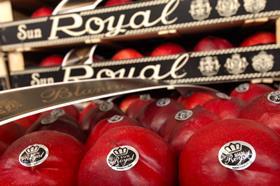
The much-awaited opening of the Chinese market to Spanish stonefruit in April is creating quite a stir among producers eager to explore new opportunities beyond EU borders.
Joan Serentill of Lleida-based grower-exporter Fruilar believes Spain has the potential to do very well by targeting the very top segment of the market. “You have to think of China not in terms of volume but rather as a niche premium market,” he says, adding that the logistics involved pose a considerable challenge for shippers.
A number of companies have wasted no time in taking the plunge, among them SAT Royal, who believes the market could be a perfect fit for its varietal offer. It is wasting no time in exploring what the market has to offer and has already registered several stonefruit orchards for export, specifically for yellow and white-fleshed nectarines and various pluot varieties.
The company carried out its first airflown shipments in June. “Technically, seafreight is also a viable option, but this is difficult with early varieties,” says Diego Pozancos, who oversees quality and product development at the company. “The regulations require shipments to be subjected to cold treatment for a two-week period and while this doesn’t affect quality, it does significantly reduce the shelf-life of the fruit.”
Lleida-based Fruits de Ponent is making steady inroads in markets like Singapore, Hong Kong and Malaysia but China will be off the table for this season at least due to the shorter crop. The company anticipates a 20 per cent drop in production after facing a series of climatic challenges in the run up to the new season.
“We are looking at the market and registered some of our orchards this year, but in light of the fall our primary objective is to consolidate our position in our core European markets,” says managing director Josep Presseguer.
In Murcia, meanwhile, a total of 11 companies have registered their orchards and packhouses to export to China in 2016. Joaquín Gómez, president of regional grower-exporter association Apoexpa says volumes will be limited this season but could climb to 12,000 tonnes next year for the whole of Spain, of which around half will come from Murcia.
How the market develops in the long term once the initial wave of enthusiasm dies down remains to be seen, however. In spite of its size, Pozancos points out that its potential will be limited.
“When we talk about China, we are not talking about a potential market of 1.3bn people,” he says. “Around 40 per cent of the population lives in cities but less than 10 per cent – around 95m people – has the purchasing power to be able to afford imported produce. Nevertheless, this represents a decent sized market where our produce is in high demand – our biggest challenge will be overcoming the obstacles imposed by the import protocol.”
A key feature of the Chinese market is the dominance of regional importers and wholesalers, very few of whom operate at a national level. This, together with the country’s underdeveloped cold chain infrastructure, will impose certain limitations on the company’s market development strategy, Pozancos says.
Royal hopes that gaining a foothold in the Chinese market will smooth the way for the company to start exporting blueberries once the protocol is in place, although Pozancos doesn’t think this will be any time soon.
“European agriculture commissioner Phil Hogan has made it clear that while negotiations with China are advancing positively we should not expect to see great progress in the short term,” he says. “For Spain, the next protocol up for negotiation is for table grapes. In terms of volume, blueberries come a long way behind grapes, which suggests that it comes way down the government’s list of priorities.”
Nevertheless, the company is one of several Spanish berry suppliers preparing the way with investments in imported varieties and new technologies to ensure that they are fully prepared when the market does eventually open.



